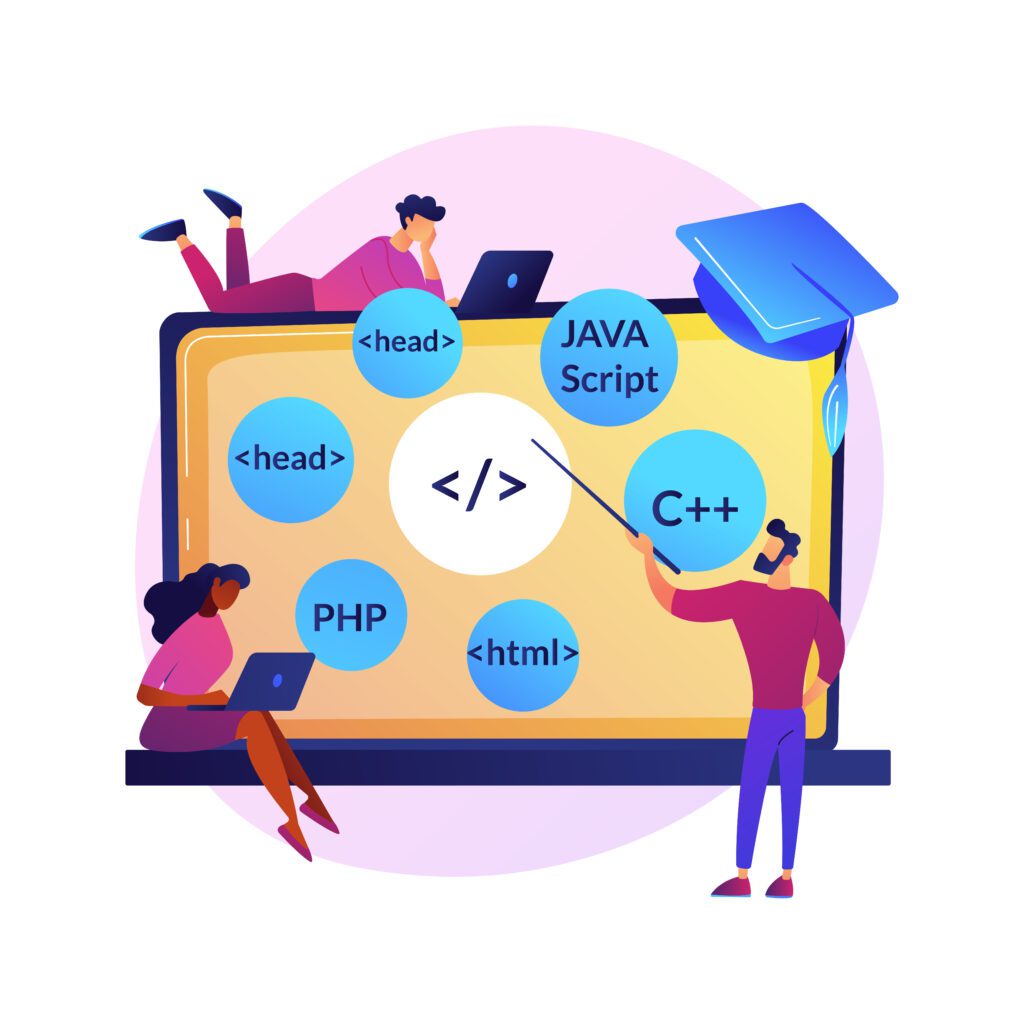
I. Introduction
Definition of High-Level Programming Languages
High-level programming languages are designed for human readability and ease of use, allowing programmers to write code in a more natural and intuitive manner. Unlike low-level languages, such as assembly or machine code, high-level languages abstract away complex details, making coding more accessible to a broader audience.
Brief History of High-Level Programming Languages
The journey of high-level programming languages dates back to the mid-20th century when the first languages like Fortran and Lisp were developed. Over the years, these languages have evolved, giving rise to a diverse range of tools that cater to different needs and domains.
Importance in the Digital Era
In today’s digital landscape, high-level programming languages play a pivotal role in software development, enabling faster prototyping, efficient code maintenance, and seamless collaboration among developers.
II. Characteristics of High-Level Programming Languages
Readability and Ease of Use
One of the primary characteristics of high-level languages is their emphasis on readability. Languages like Python and Ruby are known for their clean syntax, making it easier for developers to understand and modify code.
Abstraction and Efficiency
High-level languages provide a level of abstraction that allows programmers to focus on solving problems rather than dealing with low-level details. This abstraction contributes to code efficiency and reduces the likelihood of errors.
Portability Across Platforms
Portability is a key feature of high-level languages, allowing code to run on different platforms with minimal modifications. This portability is crucial in a world where diverse devices and operating systems coexist.
III. Popular High-Level Programming Languages

Python
Known for its simplicity and versatility, Python has become a go-to language for beginners and professionals alike. Its extensive libraries and frameworks make it suitable for a wide range of applications, from web development to data science.
Java
Java’s “write once, run anywhere” philosophy has made it a robust choice for building cross-platform applications. Its strong community support and scalability contribute to its popularity.
C++
Combining the power of low-level programming with high-level abstractions, C++ is widely used in systems programming, game development, and performance-critical applications.
JavaScript
As the language of the web, JavaScript enables interactive and dynamic web pages. Its integration with HTML and CSS makes it a fundamental tool for front-end development.
IV. Evolution and Trends in High-Level Programming Languages
Object-Oriented Programming
The evolution of high-level languages has seen a shift towards object-oriented programming (OOP). Languages like Java and C# embrace OOP principles, enhancing code organization and modularity.
Functional Programming
Functional programming languages, such as Haskell and Scala, focus on immutability and declarative code. This paradigm shift offers new ways of approaching problem-solving and parallel processing.
Low-Code and No-Code Development
In recent years, the rise of low-code and no-code platforms has simplified application development, allowing individuals with minimal coding experience to create software solutions.
V. Advantages of Using High-Level Programming Languages
Faster Development Cycles
High-level languages promote rapid development cycles, enabling programmers to bring ideas to fruition more quickly. This agility is crucial in today’s fast-paced tech environment.
Increased Productivity
The abstraction provided by high-level languages reduces the amount of code needed to perform tasks, leading to increased productivity. Developers can achieve more with fewer lines of code.
Enhanced Code Readability and Maintainability
The clean syntax and structure of high-level languages contribute to code readability, making it easier for multiple developers to collaborate on projects. This readability also facilitates future maintenance and updates.
VI. Challenges and Criticisms
Performance Concerns
While high-level languages offer abstraction and productivity, concerns about performance persist. Performance-intensive applications may still benefit from low-level languages to achieve optimal execution speed.
Learning Curve for Beginners
Some beginners find the learning curve of high-level languages steep, especially when transitioning from simpler languages. However, the abundance of online resources and tutorials helps ease this initial challenge.
Compatibility Issues with Certain Systems
High-level languages may face compatibility issues with specific systems or hardware configurations. Addressing these challenges often requires additional effort from developers.
VII. The Role of High-Level Programming Languages in Industry
Applications in Web Development
High-level languages like JavaScript, Python, and Ruby dominate web development, powering interactive and dynamic websites. Frameworks like React and Django further streamline the development process.
Usage in Artificial Intelligence and Machine Learning
Python’s widespread adoption in the field of artificial intelligence and machine learning showcases the versatility of high-level languages. Libraries like TensorFlow and PyTorch facilitate complex computations and model training.
Impact on Software Development and Innovation
The accessibility and efficiency of high-level languages have fueled innovation in software development, leading to the creation of diverse applications, from mobile apps to enterprise solutions.
VIII. Learning High-Level Programming Languages
Online Resources and Courses
Numerous online platforms offer courses and tutorials for learning high-level languages. Websites like Codecademy and Udacity provide interactive learning experiences for beginners and advanced users.
Practical Projects and Coding Exercises
Hands-on experience is crucial in mastering high-level languages. Engaging in practical projects and coding exercises helps solidify theoretical knowledge and develop problem-solving skills.
Importance of Hands-On Experience
While theoretical understanding is essential, hands-on experience is paramount. Building real-world projects allows developers to apply their knowledge, troubleshoot issues, and gain confidence in their coding abilities.
IX. Future Prospects and Emerging Technologies
Role of High-Level Languages in Upcoming Technologies
As technology advances, high-level languages will continue to play a vital role in emerging fields like quantum computing, augmented reality, and blockchain. Their adaptability positions them as foundational tools for the future.
Integration with Emerging Fields
High-level languages will likely integrate seamlessly with emerging technologies, providing developers with the flexibility to explore new frontiers in programming and problem-solving.
Potential Advancements and Breakthroughs
The future holds exciting possibilities for high-level programming languages, with potential advancements in language design, optimization techniques, and new paradigms that push the boundaries of what is possible.
X. Conclusion
In conclusion, high-level programming languages have become the bedrock of modern software development. Their evolution, adaptability, and advantages make them indispensable tools for programmers worldwide. Whether you are a seasoned developer or a beginner, exploring high-level languages opens up a world of possibilities for innovation and problem-solving.
FAQs
- Are high-level programming languages suitable for beginners?
- Yes, many high-level languages, such as Python, are known for their simplicity and are considered ideal for beginners.
- How do high-level languages impact the performance of applications?
- While high-level languages offer productivity, performance-intensive applications may require optimization using low-level languages.
- What are the key trends in high-level programming languages today?
- Object-oriented programming, functional programming, and the rise of low-code and no-code development are significant trends.
- Can high-level languages be used for developing mobile applications?
- Yes, high-level languages like Swift (for iOS) and Kotlin (for Android) are widely used in mobile app development.
- What role do high-level languages play in artificial intelligence and machine learning?
- High-level languages, particularly Python, are extensively used for AI and machine learning development due to their versatility and extensive libraries.

1 thought on “High-Level Programming Languages: Bridging the Digital Realm”
Comments are closed.